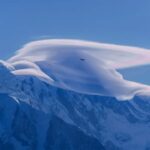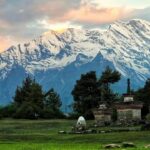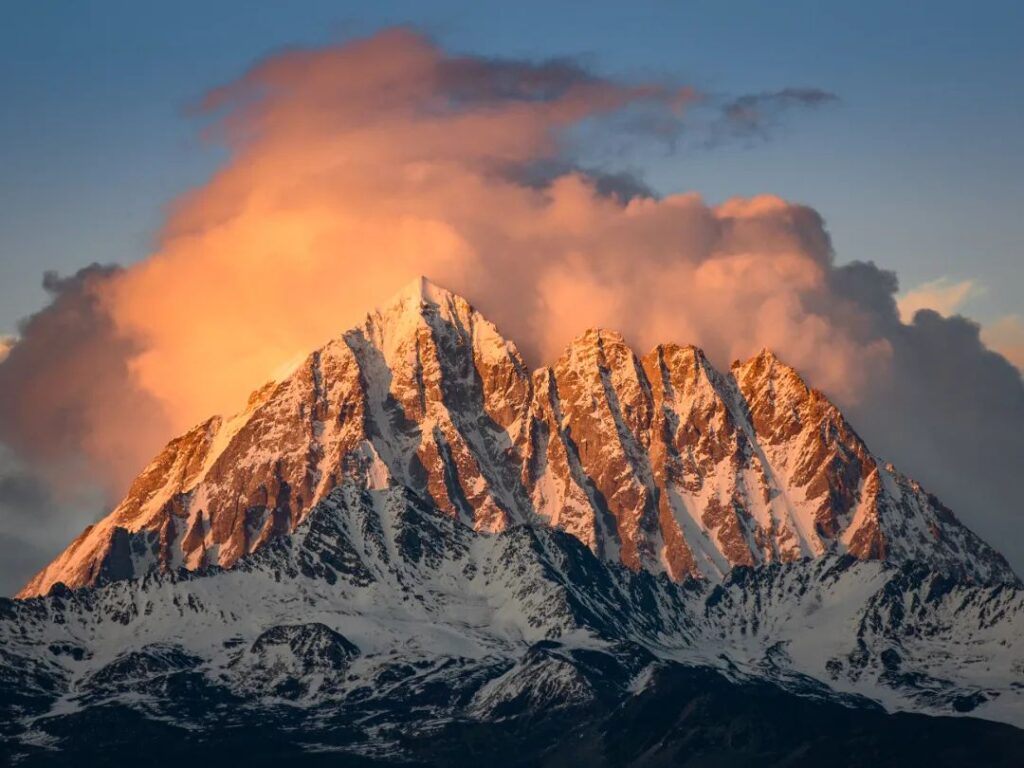
To the west of Sichuan lies a land that countless travelers hold dear in their hearts.
If you ask them why they venture here, they’ll tell you about the stunning highland scenery, the rich ethnic culture, the vast and free grasslands, and the countless towering snow-capped mountains.
But if you ask them about their top snow mountain, they’ll have a common answer: Gongga Mountain.

South of Kangding, Gongga Snow Mountain stands proudly. In November last year, its height was updated to 7,508.9 meters.
“The highest peak in Sichuan,” “The King of Shu Mountains,” “Half in the sky, half in the mortal world,” “Standing alone in the plains, uniquely beautiful in the southwest.” People don’t hesitate to praise Gongga’s majesty and grandeur with beautiful words.
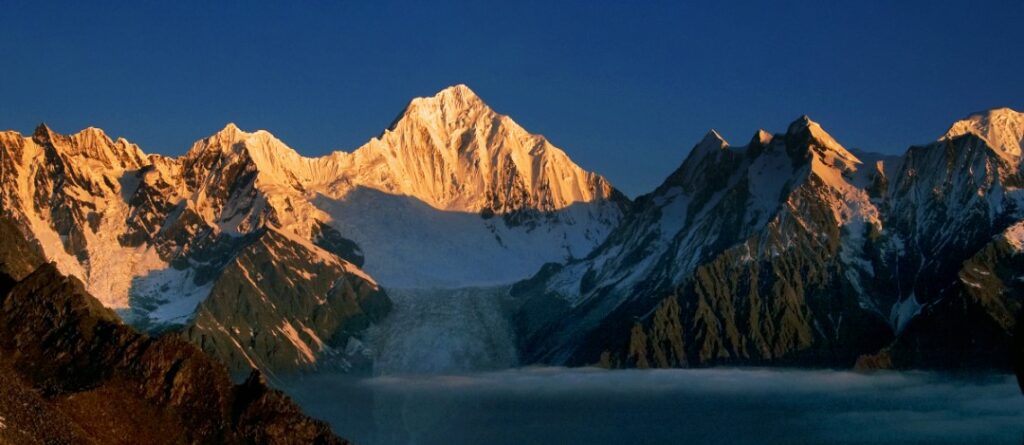
The continuous and lofty snow mountain range, with its magnificent momentum, forms a stunning landscape of extremely high mountains. Thousands of miles of silvery-white snow fields lie at its feet, and dozens of towering peaks surround it. Gongga is like a colossal ice and snow giant.
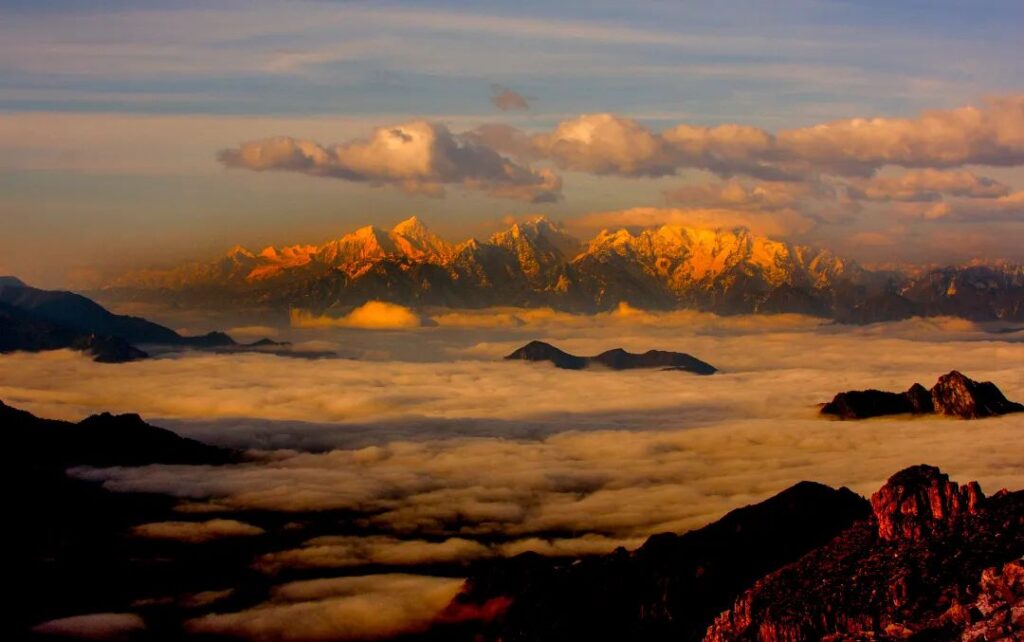
Perched above the mountains, overlooking the Sichuan Basin, it is a paradise for mountaineering and a treasure in the eyes of photography enthusiasts who travel far and wide just to capture Gongga’s beauty.
Where does Gongga’s beauty lie?
1.Golden Mountain in the Sunlight
Who among those heading towards the snow mountains doesn’t yearn to encounter the golden mountain in the sunlight? When the clouds and mist disperse, the sky becomes clear, and the sunlight passes through the atmosphere, casting a golden glow on the mountains and rivers, creating the beautiful scenery of the “Golden Mountain in the Sunlight.”
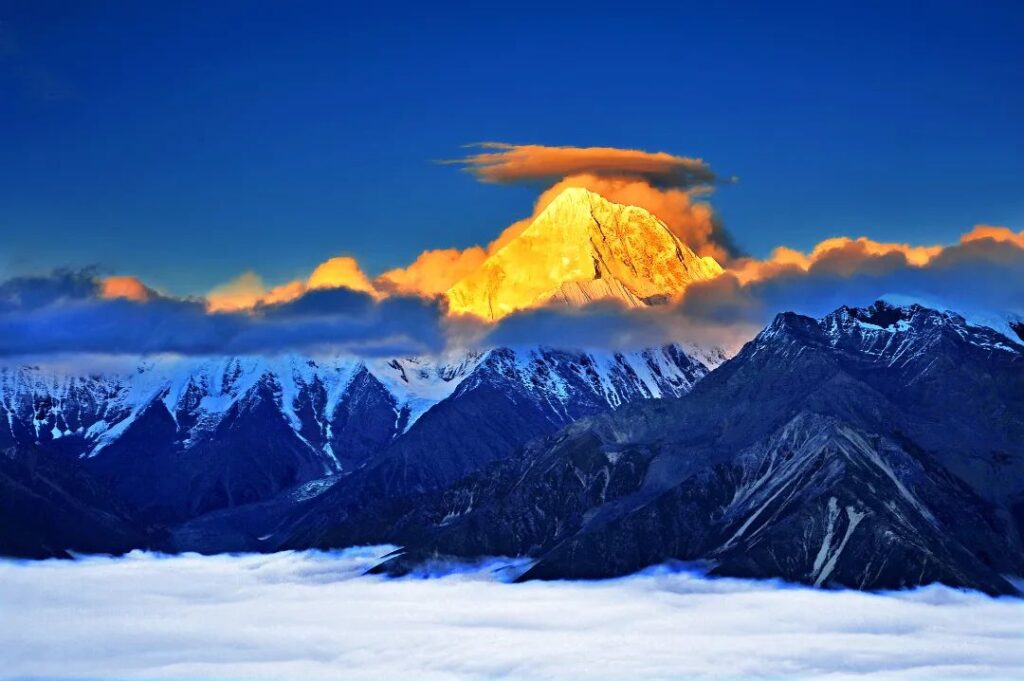
The sight of the golden mountain in the sunlight on Gongga Snow Mountain is truly unparalleled. When the mountain is illuminated, the snow mountain glitters and shines, and the light and shadow bestow charm upon the mountains, creating a fleeting moment of magnificence.
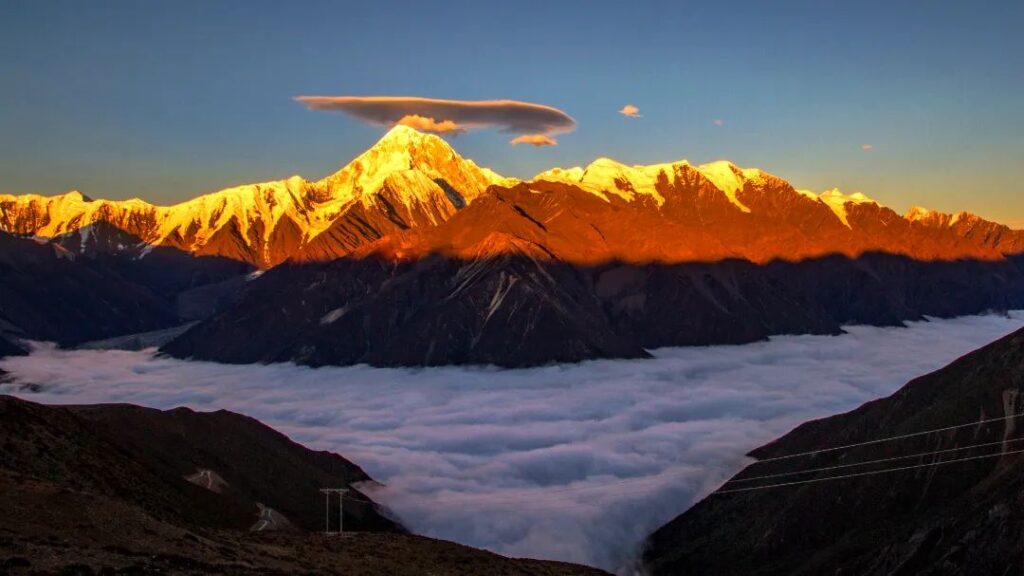
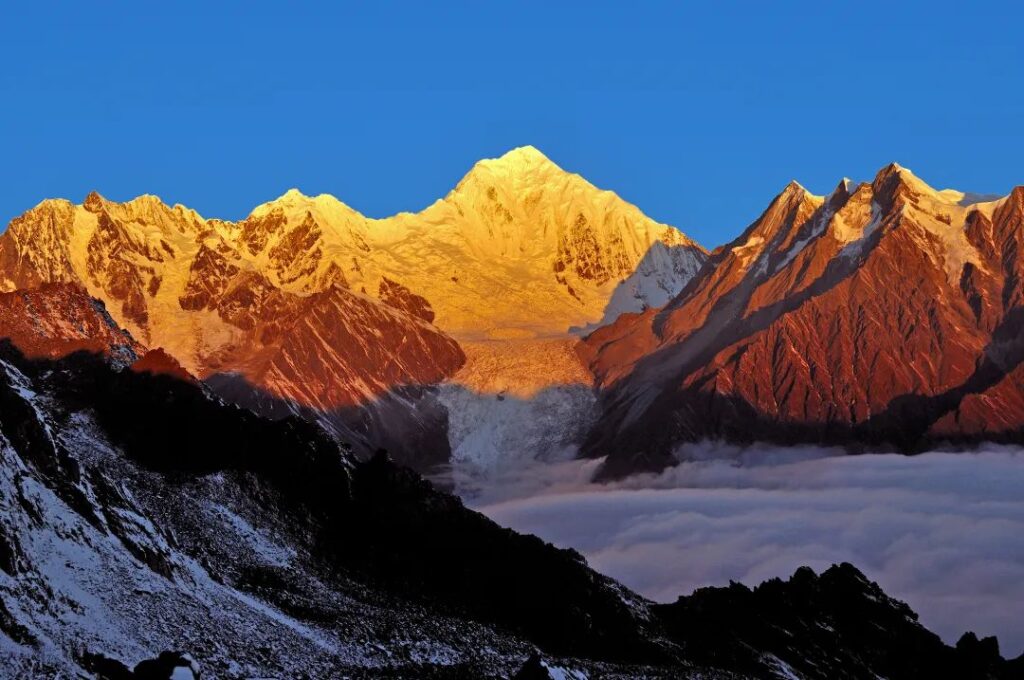
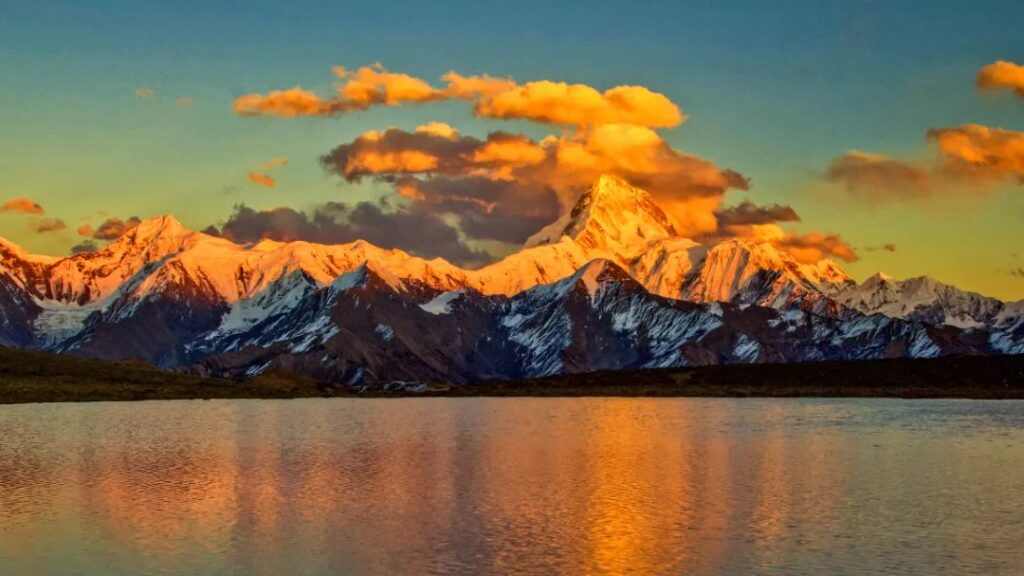
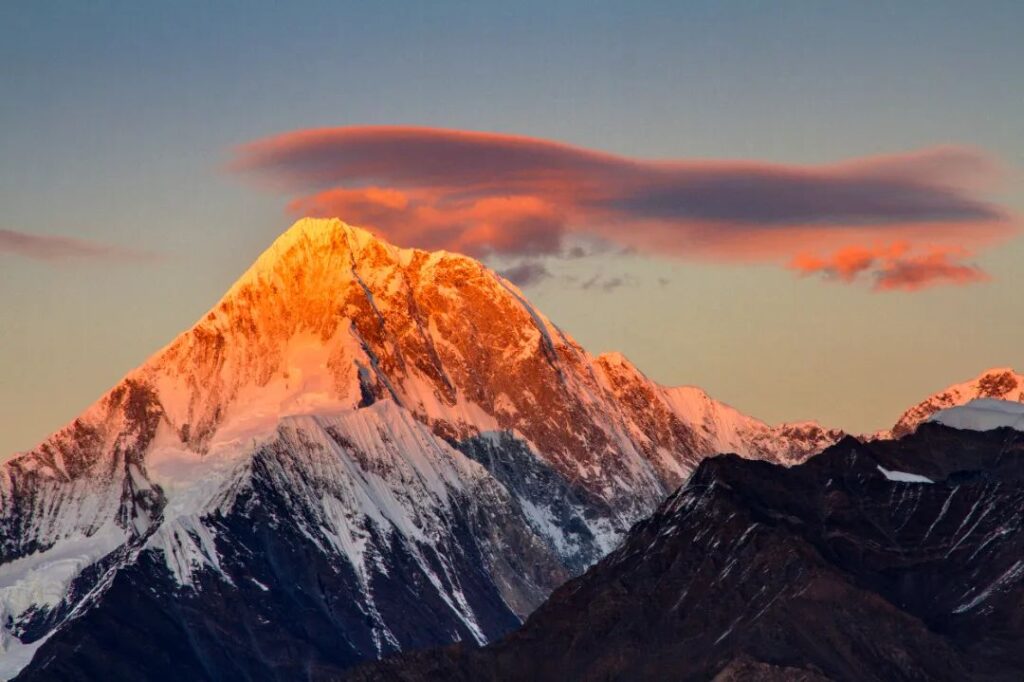
Of course, Gongga’s sea of clouds is also very beautiful. Below the mountains, the sea of clouds rolls, and the layers of clouds add a touch of softness to the rigid mountain.
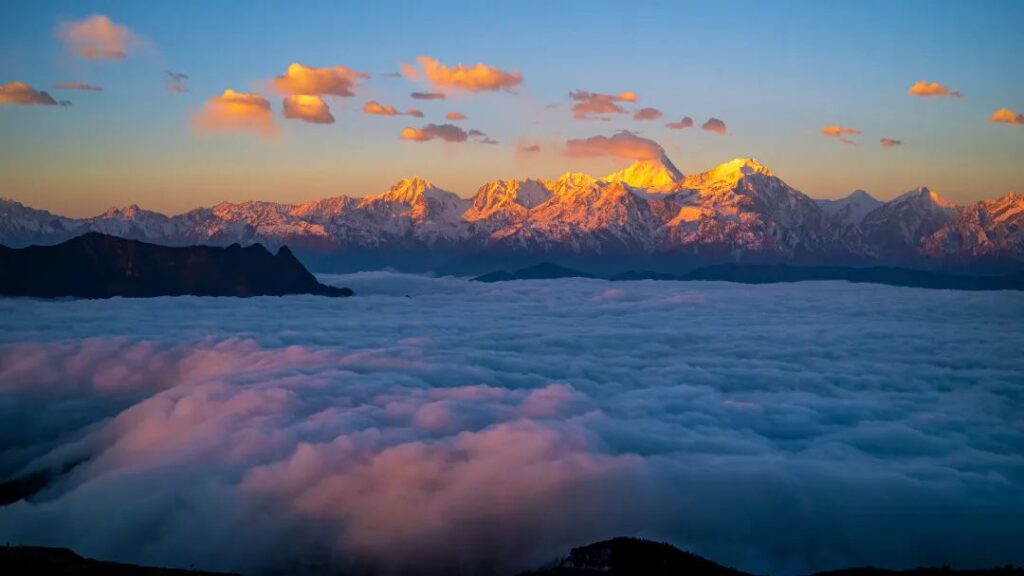
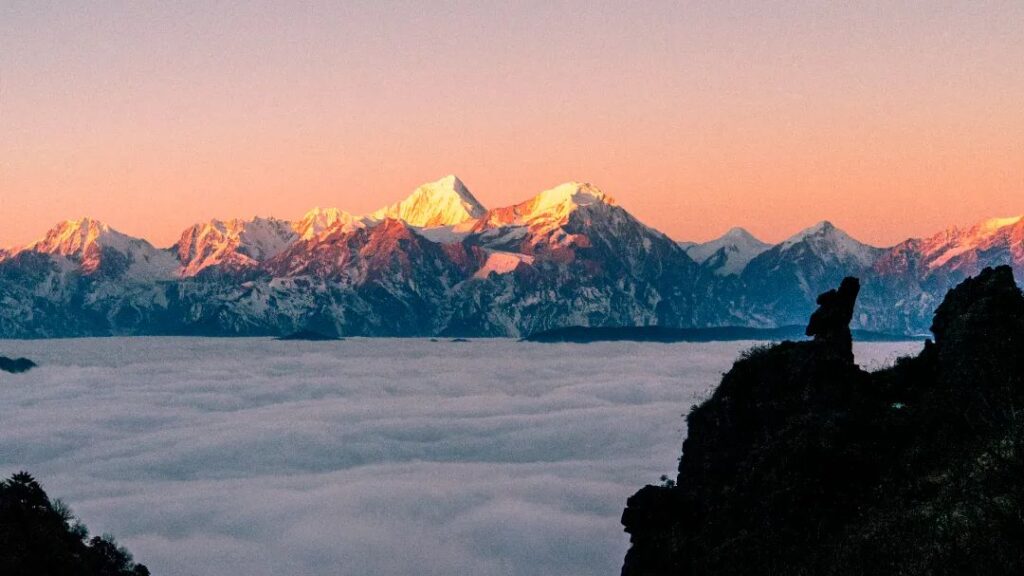
Observing the golden mountain in the sunlight requires some luck, but you should also pay attention to the following:
- The chances of seeing the golden mountain in the sunlight are higher from November to February of the following year.
- Check the weather forecast before setting out; it’s easier to see when the weather is sunny and clear.
- The duration of the golden mountain in the sunlight is short, so those who want to see it should camp out in advance!
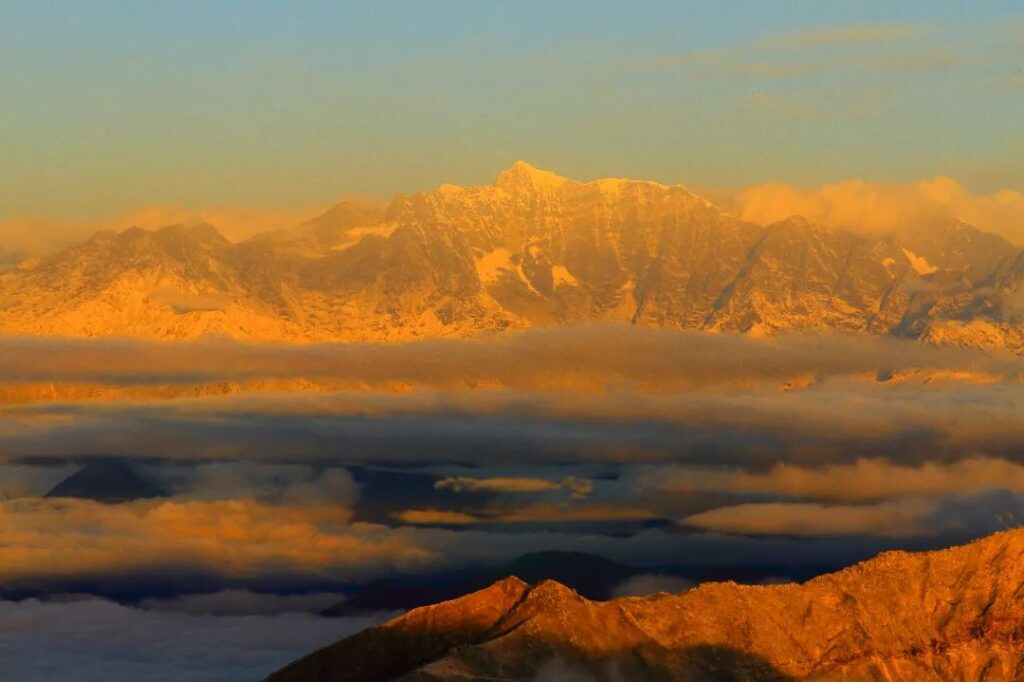
2.Glacial Landforms
Gongga Mountain is one of the concentrated distribution areas of oceanic glaciers in China’s Hengduan Mountains, possessing many favorable conditions for the formation of modern glaciers.

Gongga Snow Mountain has more than 70 glaciers, including the Yanzi Gully Glacier, Hailuogou Glacier, Mozi Gully Glacier, Nankouguan Gully Glacier, Big and Small Gongba Glaciers, and Bawang Gully Glacier, covering an area of over 255 square kilometers with a glacier reserve of 240 million cubic meters.
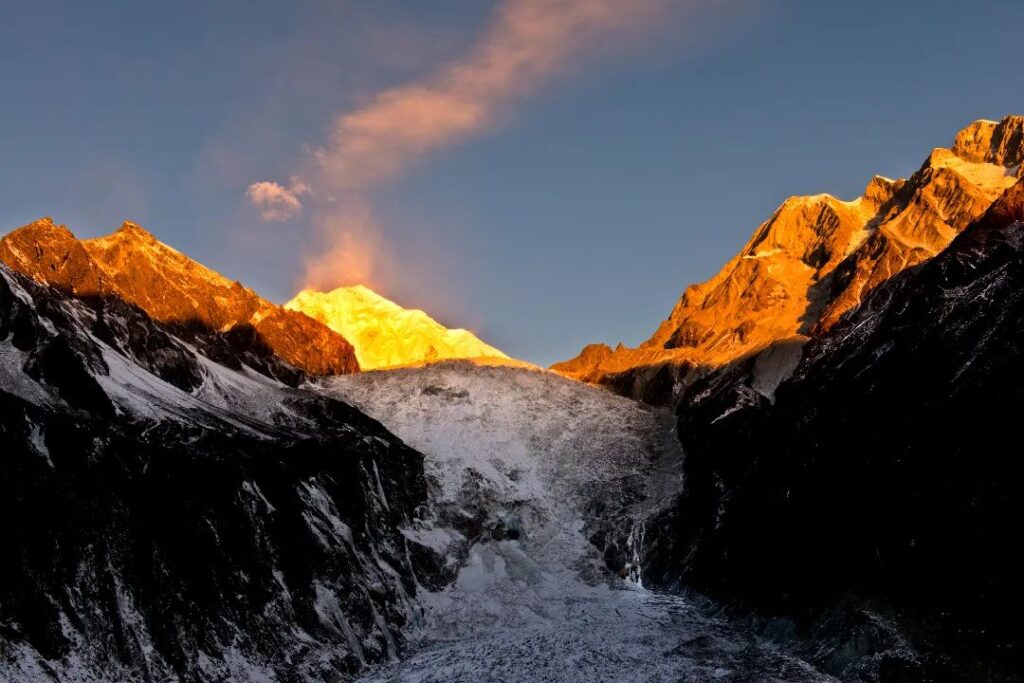
Among them, the Hailuogou Glacier is the largest and most beautiful glacier among the dozens of glaciers on Gongga Mountain.
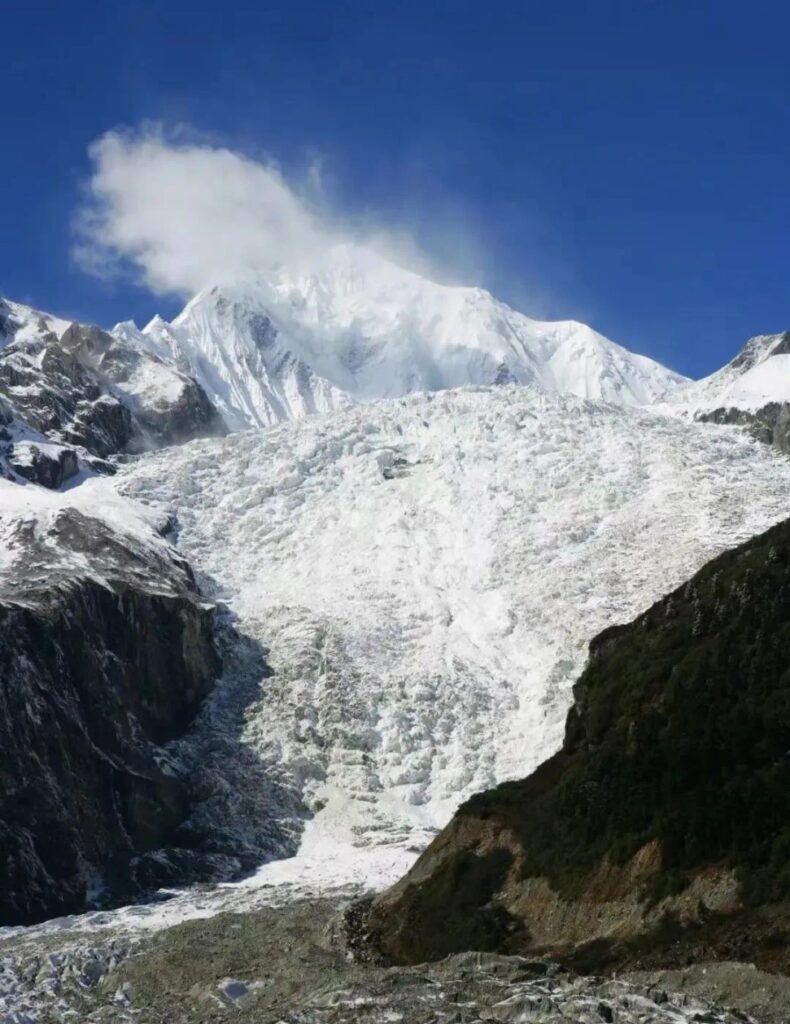
Located on the eastern slope of the Gongga Snow Peak, it is world-renowned for its low-latitude and low-altitude modern glacier. The lowest point is at an altitude of 2,850 meters, and the glacier tongue extends 6 kilometers into the primeval forest. The glacier and the forest complement each other, forming a unique landscape of “green sea and silver river.” The scenery inside the gully can be described as the essence of Gongga.
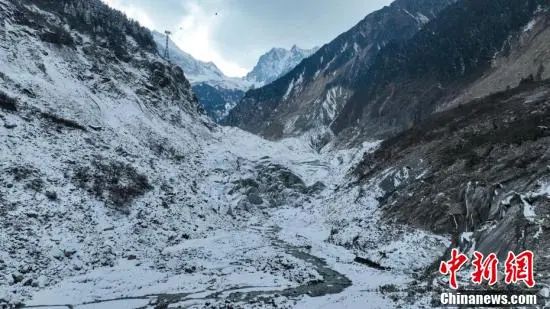
Currently, the Hailuogou Scenic Area has opened some attractions and is undergoing restoration and construction. It is expected to fully open within the year. For friends who want to better appreciate the beauty of the glaciers, stay tuned!
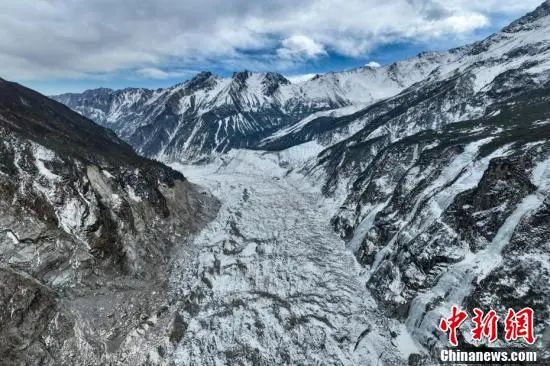
3.Natural Scenery
In addition to ancient glacial remains and modern glaciers, Gongga also preserves primeval forests, hot springs, lakes, snow peaks, and other landscapes, boasting unique landforms and pristine natural scenery.
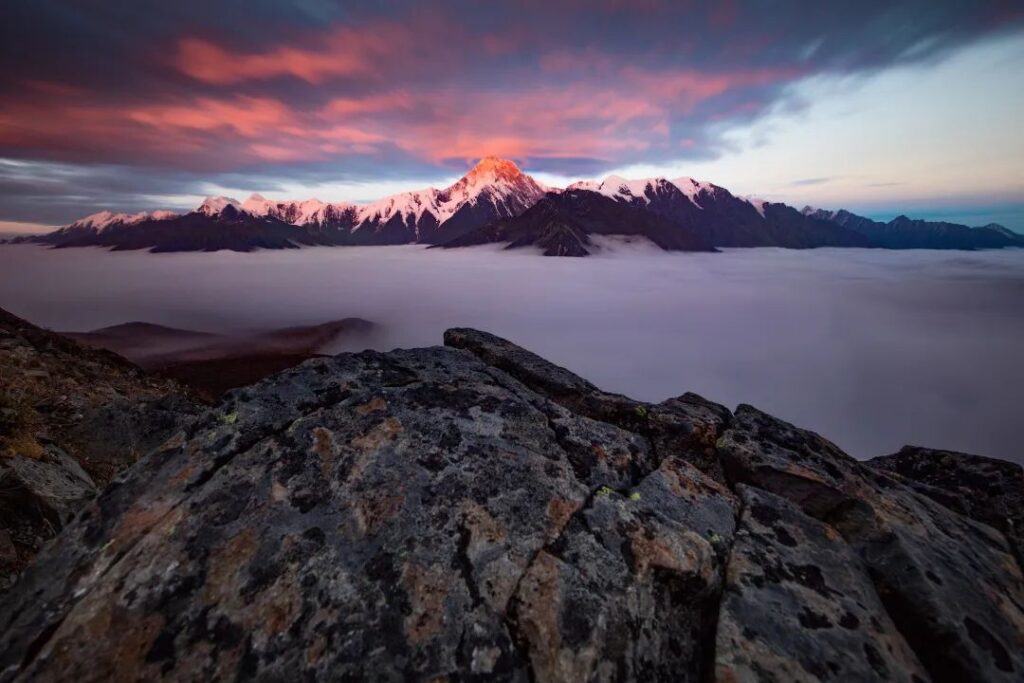
From March to August, it’s a beautiful spring and summer, with wildflowers in full bloom. Kangding magnolias and alpine rhododendrons fill the trees, branches, valleys, and slopes.
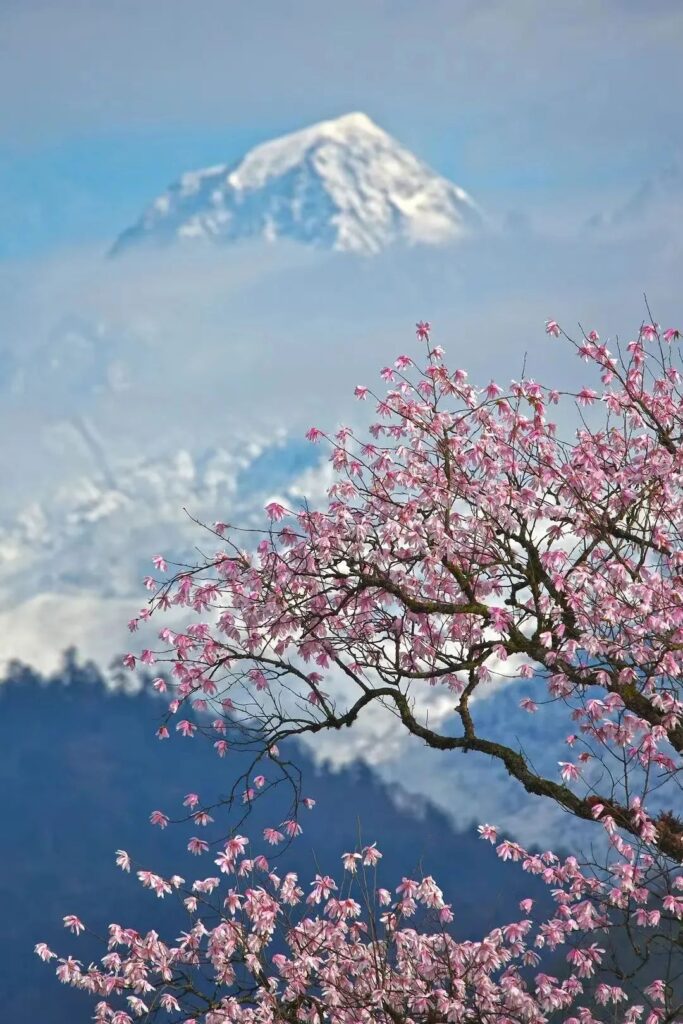
In September, Gongga Mountain transitions from summer to autumn, with relatively stable weather, making it a good season to view the snow mountains.
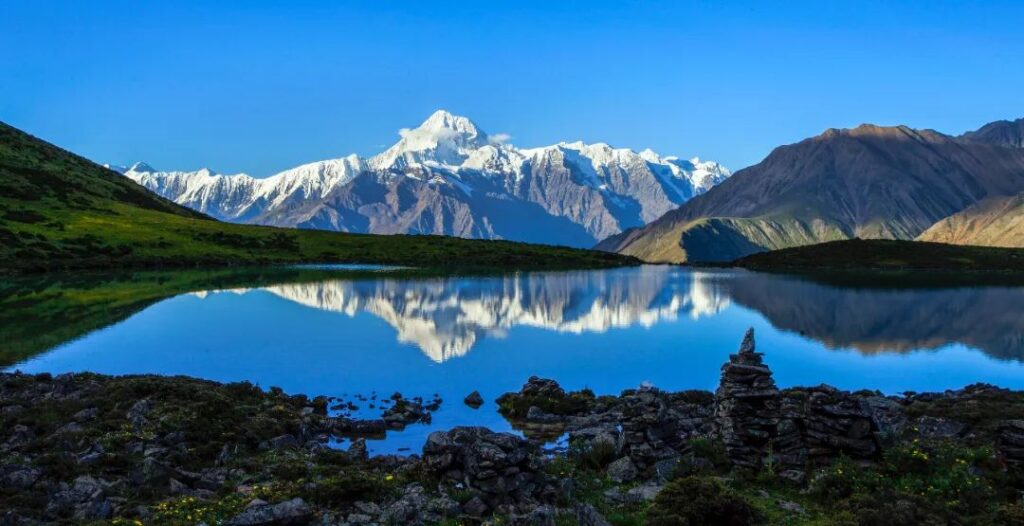
Later, in October and November, Gongga enters autumn, with colorful forests making their appearance. If you encounter an autumn snowfall, you can witness the mountains and forests painted in a kaleidoscope of colors, with snow-capped mountains and colorful forests filling your eyes.
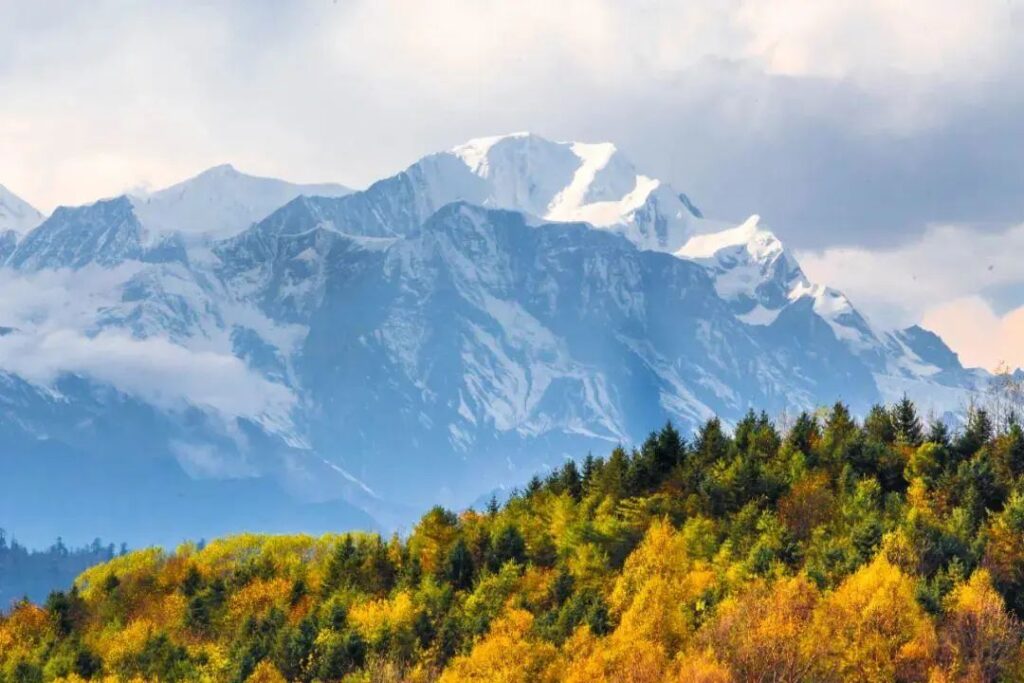
Winter is the snow mountain season, with endless snow-covered plateau scenery and the opportunity to admire blue ice. It’s also easier to see the snow mountains due to fewer clouds.
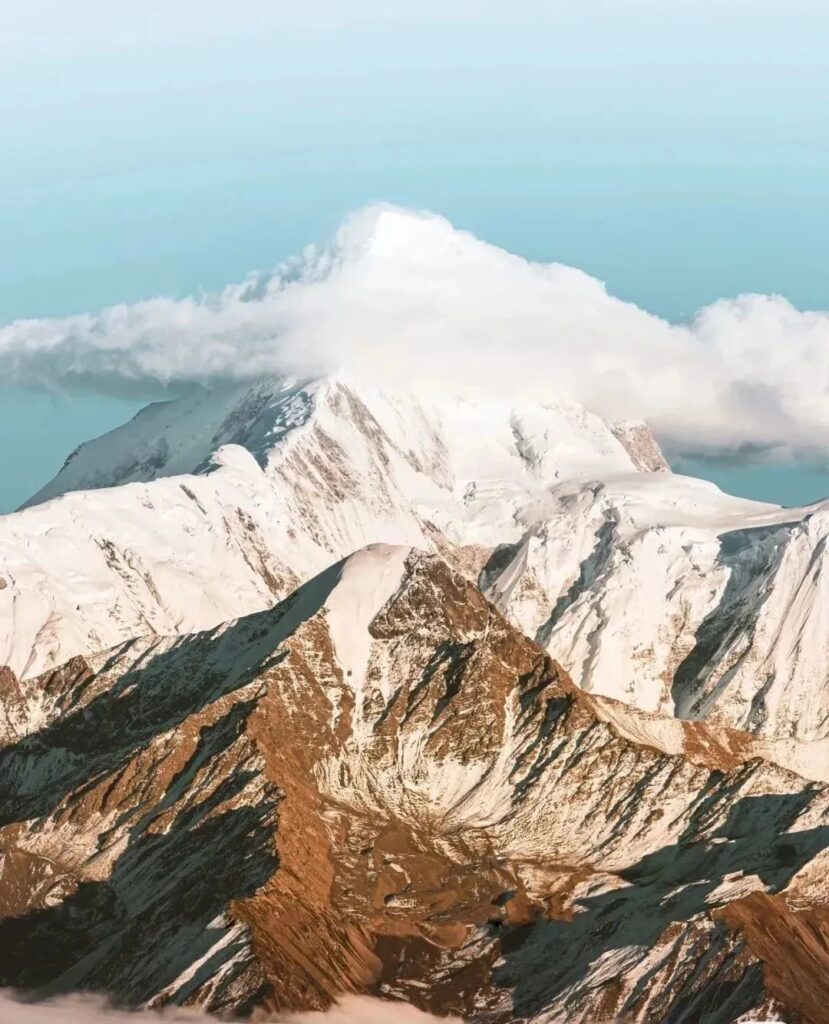
Beautiful snow mountain seas of clouds, dreamy starry grasslands—Gongga’s beauty knows no seasonal bounds.
It is precisely for this reason that Gongga Snow Mountain was ranked second among the “Top Ten Most Beautiful Mountains in China” by China National Geography.
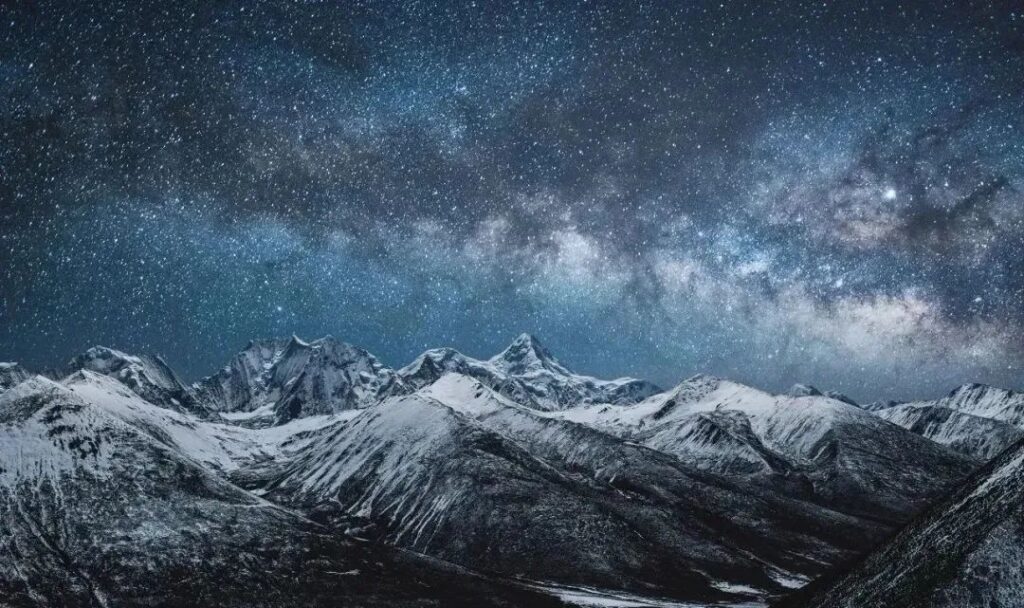
From afar, it appears close to the mortal world; up close, it is extremely stunning; when climbing, it is majestic and perilous. This is Gongga!
4.Gongga Snow Mountain Observation Points
The difficulty of climbing Gongga Snow Mountain is extremely high, with only a little over twenty people having reached the summit so far.
If the mountain cannot be climbed, then one can admire it from afar. The clever people of Sichuan have their own ways—finding one observation point after another to gaze upon Gongga’s grandeur.
📌 Observation Point: Yuzi West
Yuzi West is a 360-degree observation platform at an altitude of 4,200 meters. Here, the field of vision is wide open, with almost no obstructions. From the mountaintop, one can simultaneously see Gongga Snow Mountain, Siguniang Mountain, and Yala Snow Mountain.
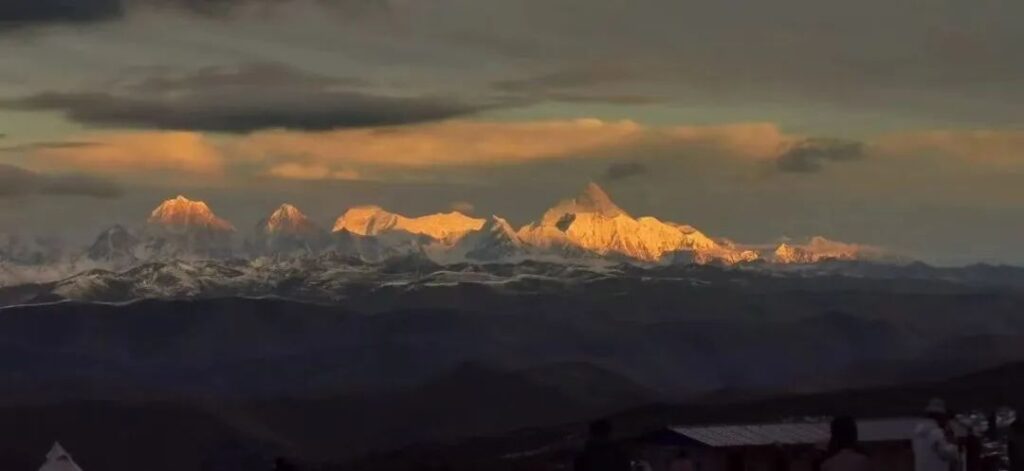
If you stand at a specific angle, you can even capture the golden mountains in the sunlight of both Yala and Gongga at the same time.
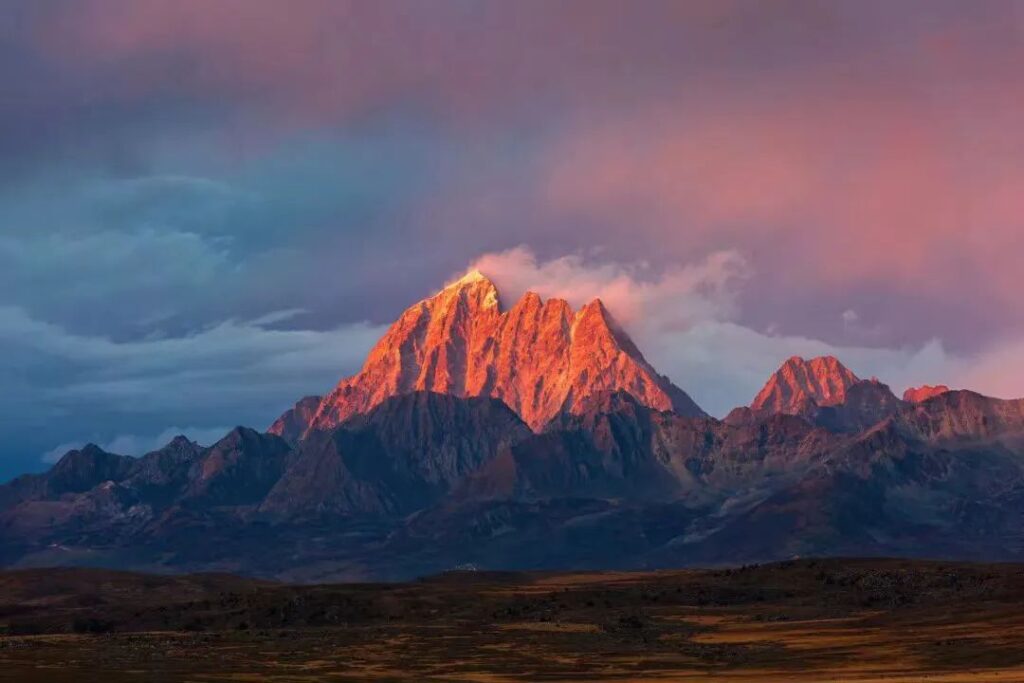
📌 Observation Point: Kangding Yaha Pass
Yaha Pass is relatively close to Gongga in a straight line. From here, you can clearly see the knife-like texture carved out by Gongga’s glaciers, as well as Gongga’s nearly perfect mountain curve.
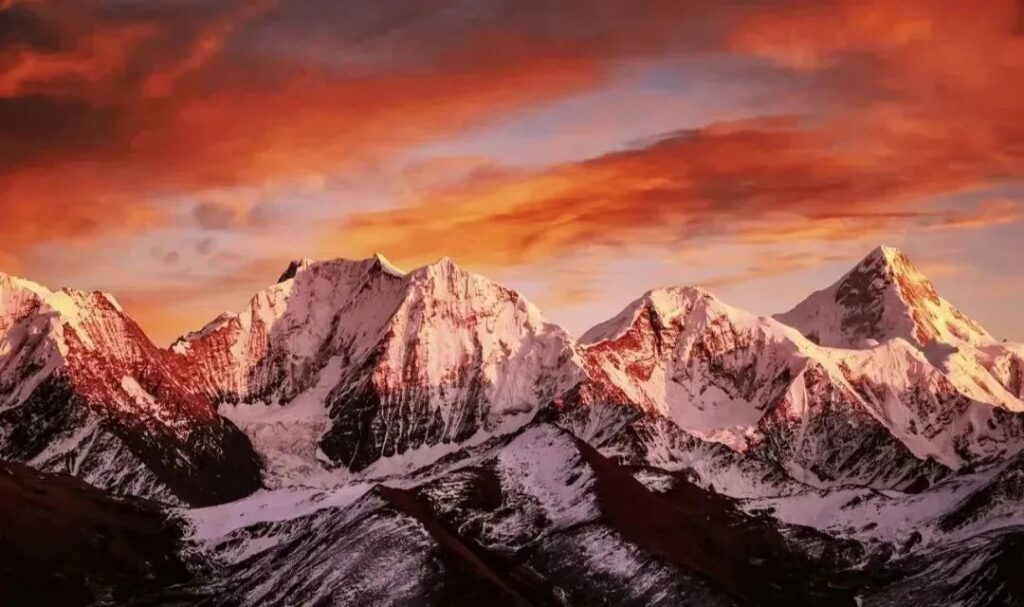
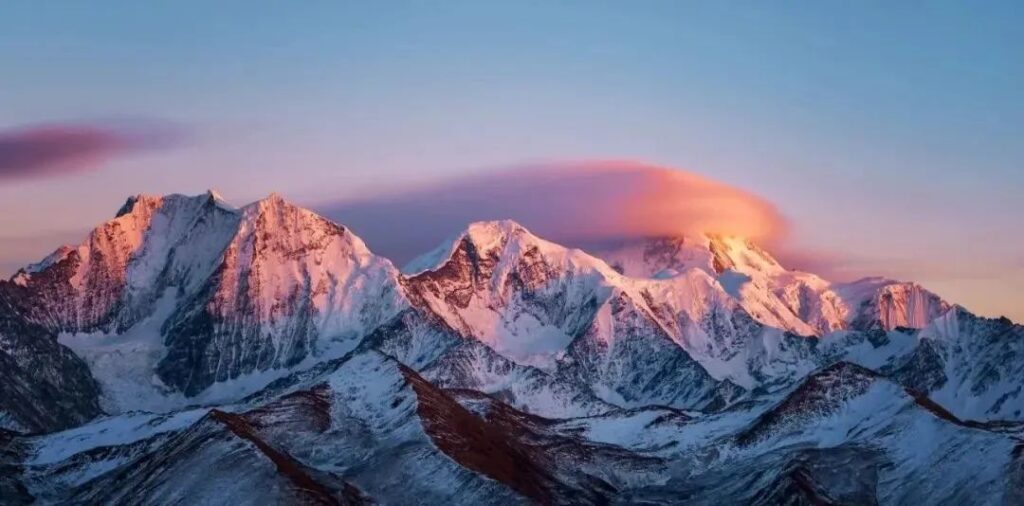
At night, you can admire the beautiful starry sky, and if you’re lucky, you might even encounter a shooting star.
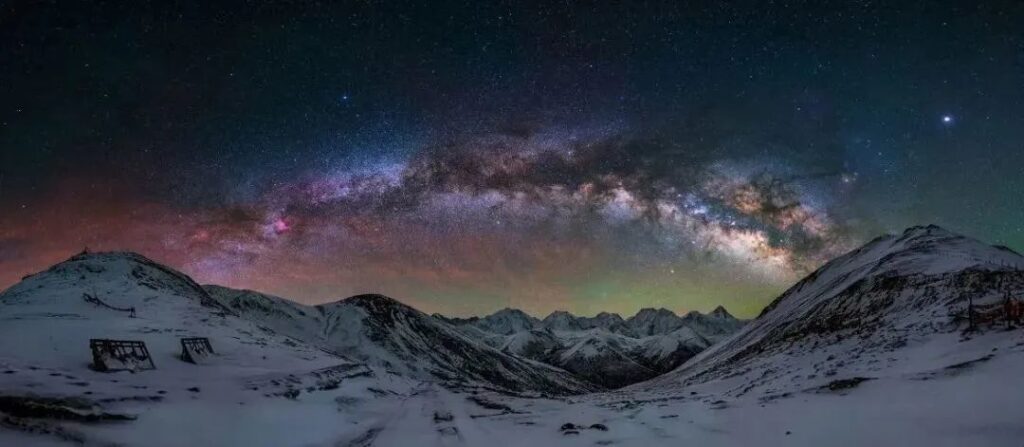
📌 Observation Point: Kangding Zimei Pass
Zimei Pass is only 5 kilometers away from Gongga in a straight line and is an internet-famous observation deck in western Sichuan. On a clear day, you can see the sea of clouds and the majestic stance of Gongga’s main peak. The sense of distance is closer here, and you can drive there.
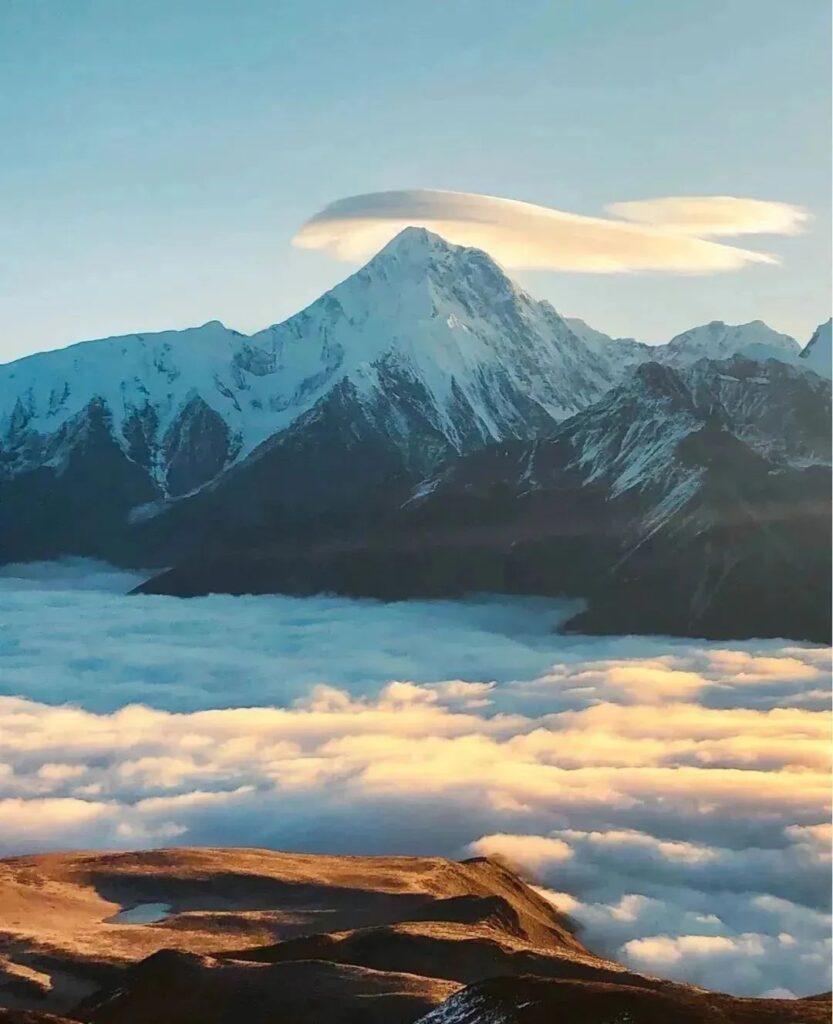
📌 Observation Point: Kangding Yulong West Pass
From a geographical perspective, Yulong West Pass is more suitable for viewing Gongga than Zimei Pass. However, due to its remote location, fewer people come to visit. The view here is wide, directly facing Gongga’s main peak, and the mountain shape is even more beautiful.
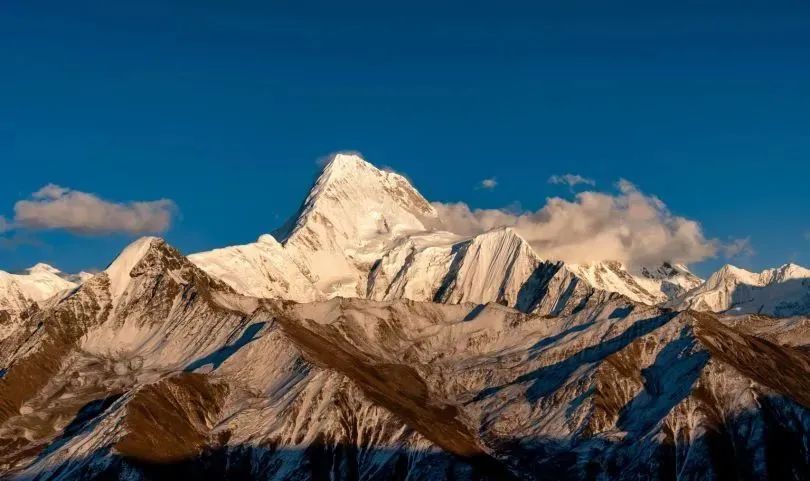
📌 Observation Point: Kangding Lengga Lake
Lengga Lake is a lake on the southwestern slope of Gongga, known as the “Pearl at the Foot of Gongga Snow Mountain.” The mountaintop has an altitude of 4,530 meters and is only a little over 10 kilometers away from Gongga Mountain.
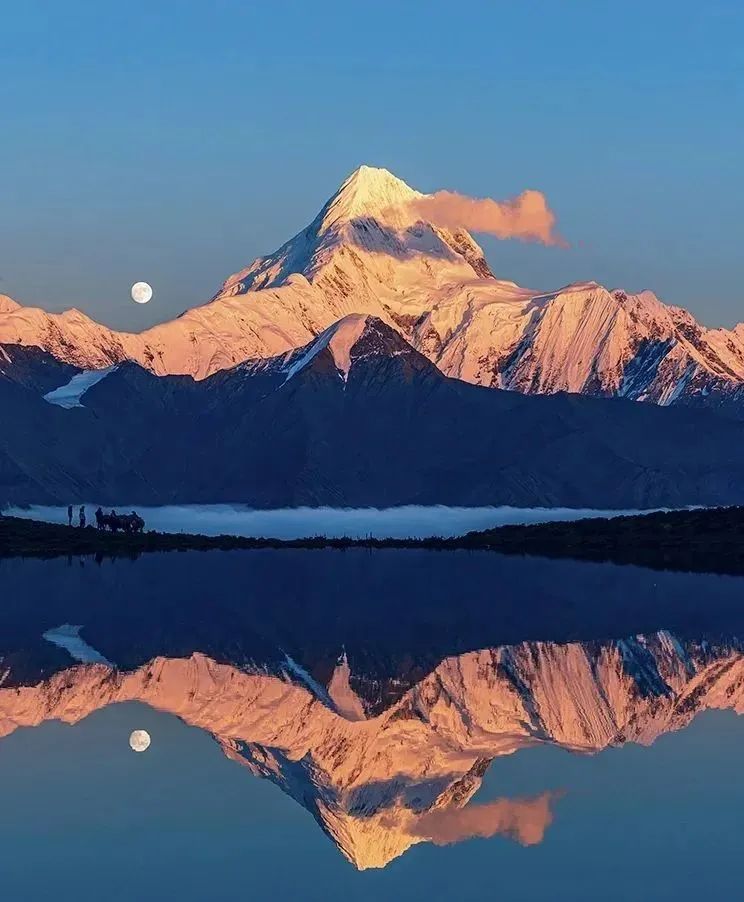
There are many Gongga observation platforms in western Sichuan, but Lengga Lake is the only one that can capture the reflection of Gongga at a straight angle. The lake water is crystal clear, and the reflection of the snow mountain is very beautiful.
To reach Lengga Lake, you need to ride a horse or take a motorcycle up and down the mountain. Friends with good physical fitness can also choose to hike. It takes about 1.5 hours to hike up the mountain, about 50 minutes on horseback, and about 15 minutes by motorcycle.

With a thousand different faces, each one is fascinating. The treasure trove of Gongga Snow Mountain’s observation points is gradually being unearthed.

But if you ask where the best place to view Gongga is, the people of Chengdu naturally have something to say: “Chengdu, of course!”
This park city at the foot of the snow mountain has already seen Gongga several times in a row by the end of March this year. How comfortable is that?

Niubei Mountain, Wanggangping, Hongyan Summit… People’s footsteps have traversed western Sichuan in search of the best angle to take in the beauty of Gongga. In addition to the recommended observation points above, you can also check out these spots~
- The best photography location on the east slope of Gongga: Niubei Mountain
- Take in both Gongga Snow Mountain and Yala Snow Mountain: Gaoer Temple Heishicheng
- The best place to watch the golden mountain of Gongga at sunrise: Wanggangping Scenic Area
- Gaze at Gongga across a sea of clouds: Hongyan Summit
- With Gongga, the king of Sichuan mountains, as the backdrop, and the snow mountain range as the setting: Kangding Airport
Everyone has a mountain in their heart. Gongga applies to be the one in yours!
